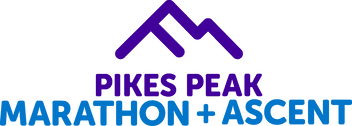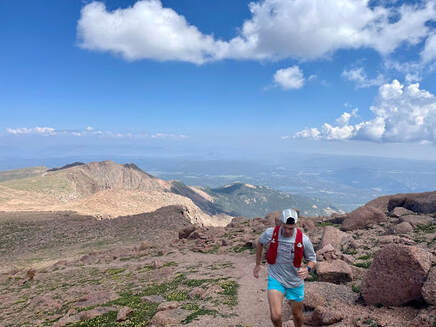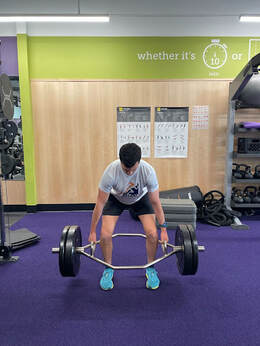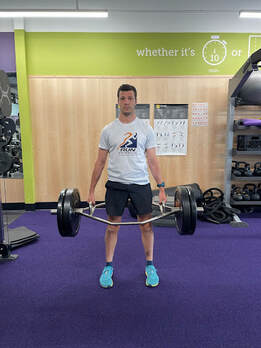Sean Rimmer, Physical Therapist & Running Coach at Run Potential Rehab & Performance in Colorado Springs, CO “Regain your confidence to run pain free & to your potential” 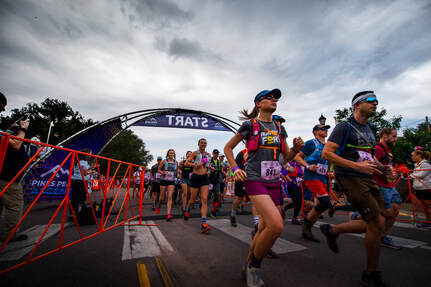 It’s finally June and The Pikes Peak Marathon & Ascent weekend is now about 3 months out. It may appear like there’s plenty of time before race day, but trust me, race weekend will be here in no time! If you’ve read part 1 of this series titled, Start Training, then hopefully you’re in a good position to build on your training this summer; as the training will now progress to build volume and increase in specificity for the demands of the mountain. In part 1 of the training series, we discussed what an early base building strategy could look like which included the following:
Periodize Your Training If you’ve incorporated a plan similar to what was discussed in part 1, then you'll be in good shape to progress this summer; as we will now aim to incorporate periodization to our training. To explain periodized training simply, this process includes cycles of training stress followed by relative training recovery, to allow our body’s to positively adapt over the training process. As I previously mentioned in part 1, as important as your fitness is for the challenge of Pikes Peak, you also must remain healthy. A periodized approach enhances our ability to recover from the stresses of training with an aim to remain healthy during the training cycle. Here’s an example of a periodized cycle of training:
I recommend choosing a 3 or 4 week periodization cycle, where a 3 week cycle would include 2 weeks of training build and 1 week of relative recovery, and a 4 week cycle would look like the aforementioned bulleted points. Training Focus Moving forward, we want to continue to build on our aerobic endurance, our steady state and tempo based efforts, as well as the musculoskeletal strength/capacity to handle the stress of the mountain and our training. If you can train within these domains while increasing the specificity of training towards race week, you will be in a good position to challenge yourself against the mountain come September! Before we jump into any specifics of the training, let’s provide some detail to the training focus terminology. Our aerobic endurance efforts will include the majority of our training with a rating of perceived exertion (RPE) of 5-6/10. This RPE range should correlate to an intensity where you can speak 3-4 comfortable sentences before needing to take a breath. These runs can typically range in duration from 30 minutes to hours. If we keep 70-80% of our training in the aerobic zone, it will enhance our ability to increase the volume of training while also promoting a level of recovery. Keeping a majority of the training at a lower intensity will allow a higher quality effort during our steady state and tempo based runs. Steady state efforts are just a step up in RPE at 6-7/10, where you are still in your aerobic zone, but slightly more challenged. During the talk test, you can speak a few short sentences. These run durations range from 30 minutes to 2-3 hours as continuous or with a short recovery period between bouts, ie. 2-10 minutes. This will be the “bread & butter” effort we will build on, as you will likely be in this effort zone for a majority of Pikes Peak if you are giving a solid effort. Lastly, the tempo run will be the highest effort based run we add to our training which is run just below or at your lactate threshold. Tempo runs are run at an effort between a 7-8/10 RPE, where you can state about a full sentence during the talk test. This effort is hard to say the least. Typically tempo runs range from 10 minutes to 1 hour, with a 2:1 work to rest ratio. If you push yourself on race day, you will likely utilize your tempo based effort during portions of the race, especially ascending above tree-line. What I recommend moving forward is the following base runs which can be periodized based on the total volume and intensity each week within a cycle (~3-4 weeks). This could look like the following:
This turns out to be 4-6 runs per week and 1-2 strength sessions per week. I recommend at least 1 day off of training per week and a minimum of 4 days per week dedicated to your training. 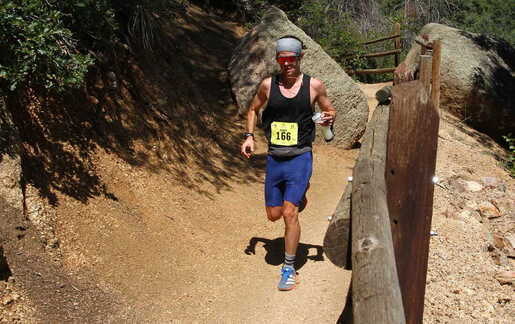 Long Runs The long run will focus on time rather than mileage due to the nature of the mountain course. I recommend keeping these runs in the aerobic endurance effort until August, by then we can add in some quality within or long run to become more specific for the event (ie. steady state efforts within the long run). In general, focus on keeping your long runs to <50% of your total weekly running volume, but more specifically, your long run does not need to be longer than your estimated race time for the ascent and up to 75% of your marathon time. So for example, if you expect to run the ascent in 4 hours, then your long run does not need to be longer than that in duration. If your marathon time is expected to be 7 hours, then your long run can be up to ~5 hours. It’s more about the build up of long runs over the next few months rather than any particular singular long run. Your long run should incorporate some practice hiking (unless you are an elite) as you will likely not be running the entirety of either race. Here are some key points for your long run:
Steady State Runs The steady state run will be the staple workout as you build over the summer. This is typically 1-4 longer based efforts that are moderately hard, but sustainable. For example, this could look like the following:
The early phase includes 20 minutes at intensity and 50 minutes in duration total, and the late phase includes 90 minutes of intensity and 130 minutes of total duration. This is just an example, as progressions should be varied based on the individual. However, the ultimate goal is to increase time at intensity even if it’s broken up by short recovery jogs/walks, as this will allow us to perform more intensity within a given quality run. As the steady state runs become longer in total duration, they can be incorporated into your long run. Tempo Runs The tempo runs will be incorporated more so initially this summer, but will begin to phase out come August with a focus more on steady state efforts. The goal of the tempo run is to build on some relative speed and our body’s ability to shuttle lactate to become more efficient at our highest aerobic intensity. These workouts will allow us to feel a bit more uncomfortably comfortable during our steady state runs. An example of an early and late phase tempo run workout could look like the following:
The early phase includes 24 minutes at intensity and 62 minutes in duration total, and the late phase includes 45 minutes of intensity and 89 minutes of total duration. Again, progressions may vary based on the individual, and these runs can also incorporate hiking if it fits within your intensity based RPE. Strength/Plyometric Training I did touch upon strength and plyometric training in part 1, but just to recap, this type of training sprinkled in will aid in tissue health (ie. bone, tendon, muscle, etc.) by increasing tissue capacity at varying loads, tissue length(s), and speed of movement. Initially, this type of training can be added into your training plan 1-2x a week, however, in the later stages of July and August, you can reduce this type of training to 1x per week. This will be due to the increase in running volume and intensity ~1 to 1.5 months out from race day. I still recommend only working a few heavier movements, and some plyometrics to enhance your muscle-tendon stretch shortening cycle. Similar to part 1, I recommend the following heavy load based movements:
Performing 1-2 sets (including 2 warm up sets) of 5-8 reps for each movement at a moderate to heavy load should suffice to hit the areas that are loaded during running. I recommend reducing the amount of sets as you progress throughout the training process to reduce soreness. The plyometric movements incorporate jump/hop based exercises focused on short ground contact time. This improves our ability to store energy and release it at a faster rate which can lead to efficiency as we run. These exercises can also focus on agility, as there is some technicality to Pikes Peak which includes some rock hopping! Some of the plyometric exercises I recommend are as follows:
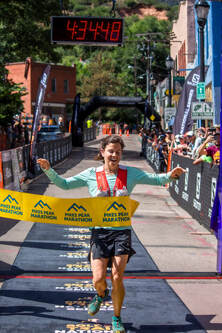 Both of these exercise variations focus on dynamic balance, reducing ground contact time, and agility to potentially enhance your ability to navigate some trail technicality. You can be more creative with the plyometrics, but simple is also effective. I recommend adding these prior to your heavier lifts to reduce excess fatigue. I recommend incorporating your strength/plyometric days as far away from your tempo/steady state runs to not compromise the quality of those runs. This could potentially mean doing a quality run in the morning and a strength session that evening if possible. Aerobic Endurance Runs The aerobic endurance runs will be added into your training program between intensity based runs, and can range from 30-90 minutes of an easy flat recovery, to hiking from 30-90 minutes, to a hike/run combo of 30-90 minutes. The general concept for these days is keeping intensity rather low (can vary from a run to hike depending on the terrain), with duration ranging from 30-90 minutes. You should feel fairly good by the end of these training sessions, if you don’t, question what your true intensity was during a given session. 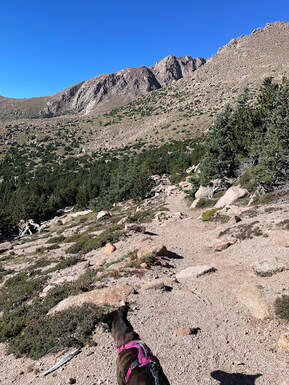 Barr Trail at Tree-Line Barr Trail at Tree-Line Putting the Pieces Together Now that we have an understanding of the variable training sessions we can implement during the week, let’s highlight everything together. Just to review, I’m not providing a specific training plan as everyone’s training background and ability to train is vastly different; however, the aim of this section is to give guidance on how to put your own training cycle together. Here are the key points to consider when building your training cycles.
 Hopefully, this article provides you with a road map on how to get from point A to point B, with you finding your path based on your specific needs. The path may not be direct and may include detours, but it’s all about ultimately making it to your destination aka. Pikes Peak with some confidence and fitness build in. *If you need more guidance or accountability for your training, I recommend finding a running coach sooner than later to work on a specific training plan for you. Stay tuned for Part 3 come August. The focus will be on fine tuning and tapering for race week! Written by: Sean Rimmer, Physical Therapist & Running Coach at Run Potential Rehab & Performance in Colorado Springs, CO. “ Regain your confidence to run pain free & to your potential” Comments are closed.
|
©
Pikes Peak Marathon
